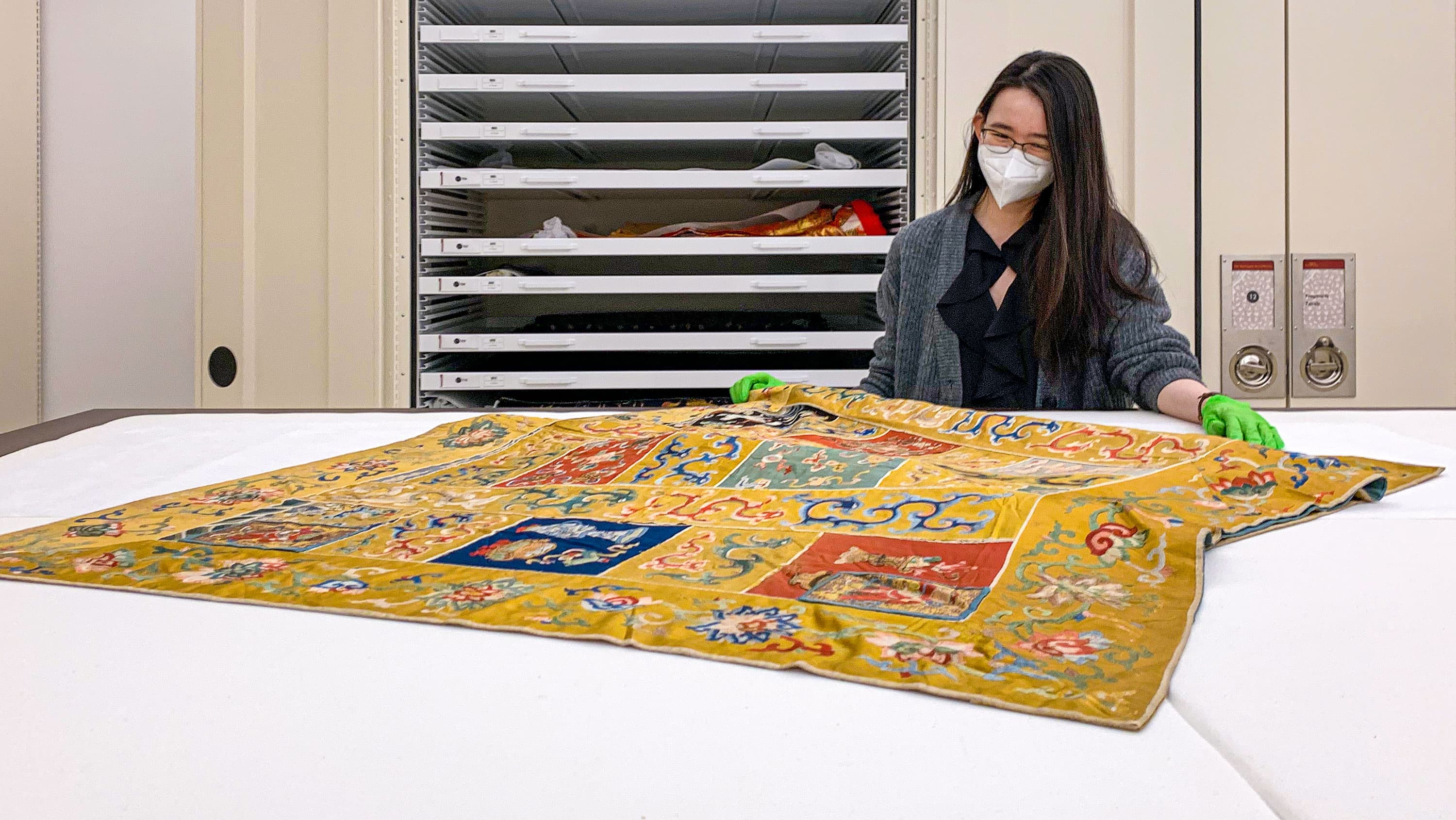As a child in South Korea, Sung Eun Cho spent many weekends with her Buddhist grandparents, who brought her along to the temples they visited.
The youngster found herself captivated by the ornate beauty of the buildings, richly adorned with traditional images and symbols of the ancient religion.
“I was mesmerized by the vivid colours and the pictures, and I wanted to know more about them.”
It was no surprise, then, that when Cho got a chance to create a University of Alberta Museums exhibit, the Faculty of Arts student knew just what to choose.
The result is Lion, Lantern, Lotus: Chinese and Buddhist Symbols in the Mactaggart Art Collection, an online exhibit that celebrates the rich visual culture that first captivated Cho as a child.
Her experience came as part of a summer internship last year. The opportunity gave Cho her first experience working in a museum setting.
“Even though we are students, we can do things like this and discover new aspects of ourselves,” said Cho, who plans to work as an art conservator.
A chance to be first
The online exhibit features a Buddhist robe and a scroll chosen from the U of A’s extensive Mactaggart Art Collection, a 1,000-piece collection of Asian textiles and art. The two artifacts were chosen as examples to help illustrate the meaning behind some Buddhist symbols.
This is the first time the late 17th-century Chinese Buddhist robe has been exhibited to the public. For Cho, who was the first person to research the robe, it was an exciting opportunity.
“It feels like I've begun uncovering what could be so much more to discover,” she said, adding that it feeds her passion for working with artifacts.
“When I’m dealing with old objects, I feel connected to that time period by digging out the stories.”
And because the Buddhist textiles in the Mactaggart Art Collection haven’t been heavily researched, Cho’s work will contribute to a lasting legacy.
The ceremonial saffron-yellow silk garment would have been worn by a high-ranking Buddhist monk or priest, to indicate their status and resulting support from the state or an important court official.
The richly embroidered garment glows with a network of silk patches filled with lions, lanterns, lotus blossoms and other symbols, including mythical animals and four “guardian kings” — each protecting the world from demons and evil spirits. They chose it for the exhibit because of its diversity of symbols and colours, said Cho, who is studying for a bachelor of arts (Honors) in the history of art, design, and visual culture.
Cho chose the second artifact — part of a coloured ink scroll dating to 1698 — to show how and where Buddhist robes were worn. The wearers are pictured receiving gifts of rice, reflecting the Buddhist belief in acts of charity.
A spotlight on unseen artifacts
Cho used her student skills to write the project proposal, conduct the necessary research and craft the text for viewers, while fellow Faculty of Arts student Tejas Ambarani designed the exhibit’s visual look and feel.
Ambarani, a graduate research assistant for the Mactaggart Art Collection, went for an exotic vibe, using vibrant browns, oranges and yellows.
“The warmer colours symbolize Buddhism more, to reflect a cultural approach. It was about building a sense of intrigue,” said the master of design student.
Working generally with the collection, Ambarani also sharpened his eye for detail by assessing artifacts for condition issues.
“Museums have objects that hold so many stories; that’s what’s really beautiful. There’s so much work that nobody knows about, behind keeping artifacts in good condition. It’s intriguing to me.”
As for Cho, seeing her childhood appreciation of Buddhist art in exhibit form would have pleased her grandparents.
“If they were still alive they would have been so proud of me, because they wanted me to be an academic,” she said.
“This exhibit was like a baby step, but I’m going in that direction.”
